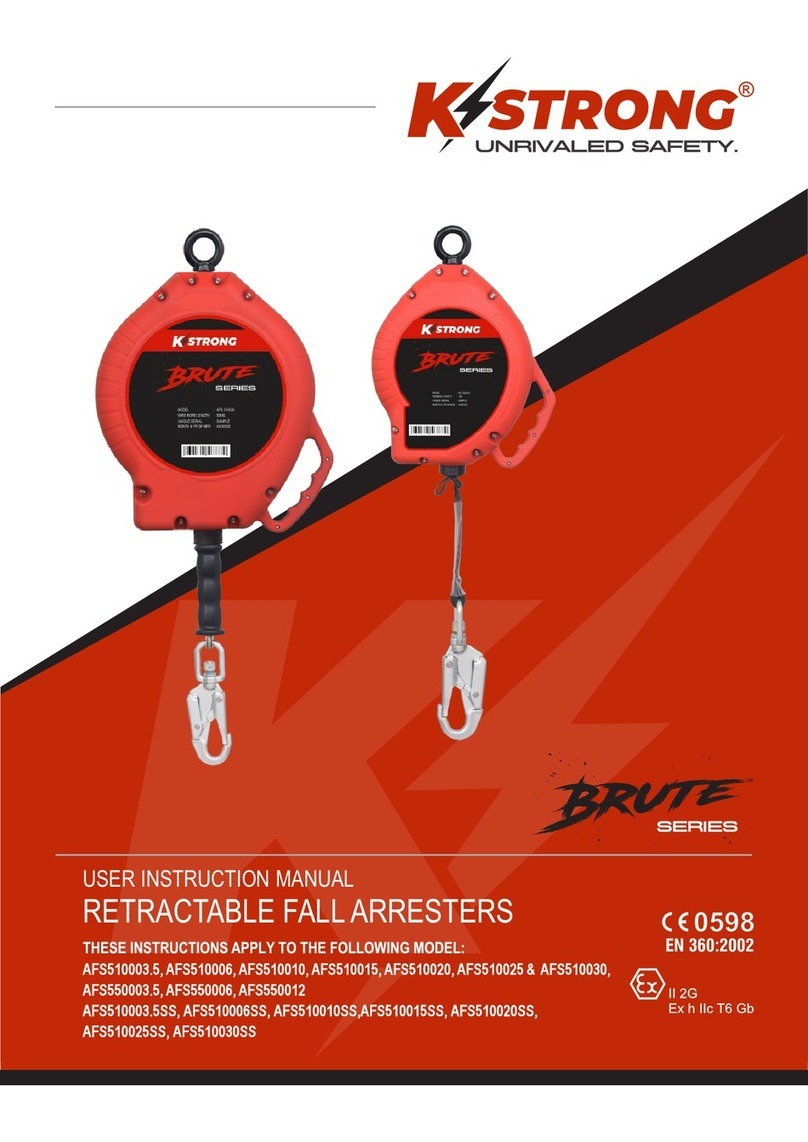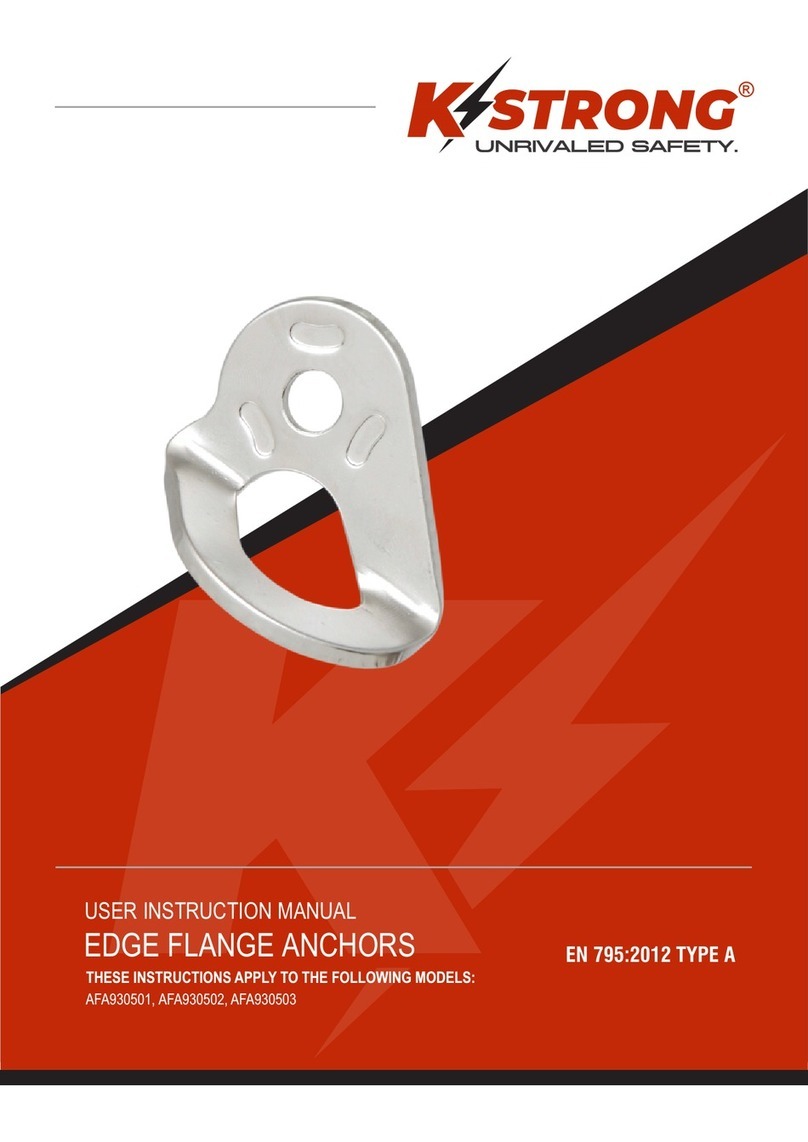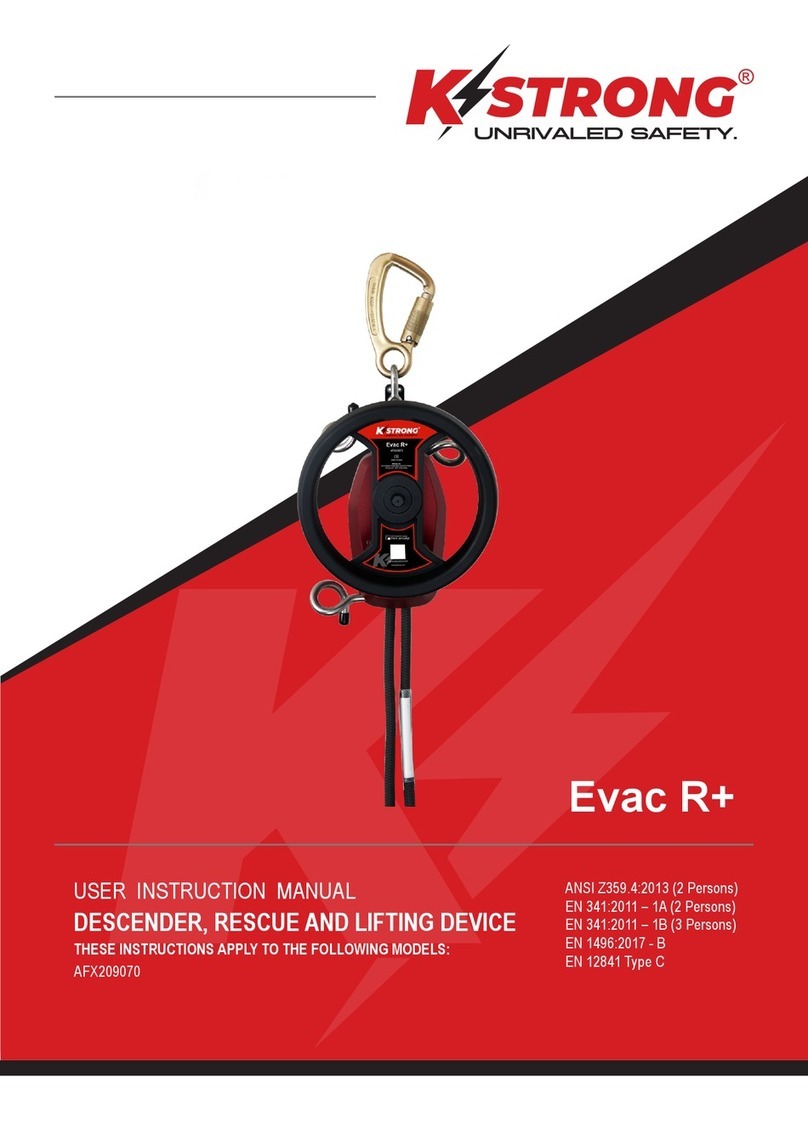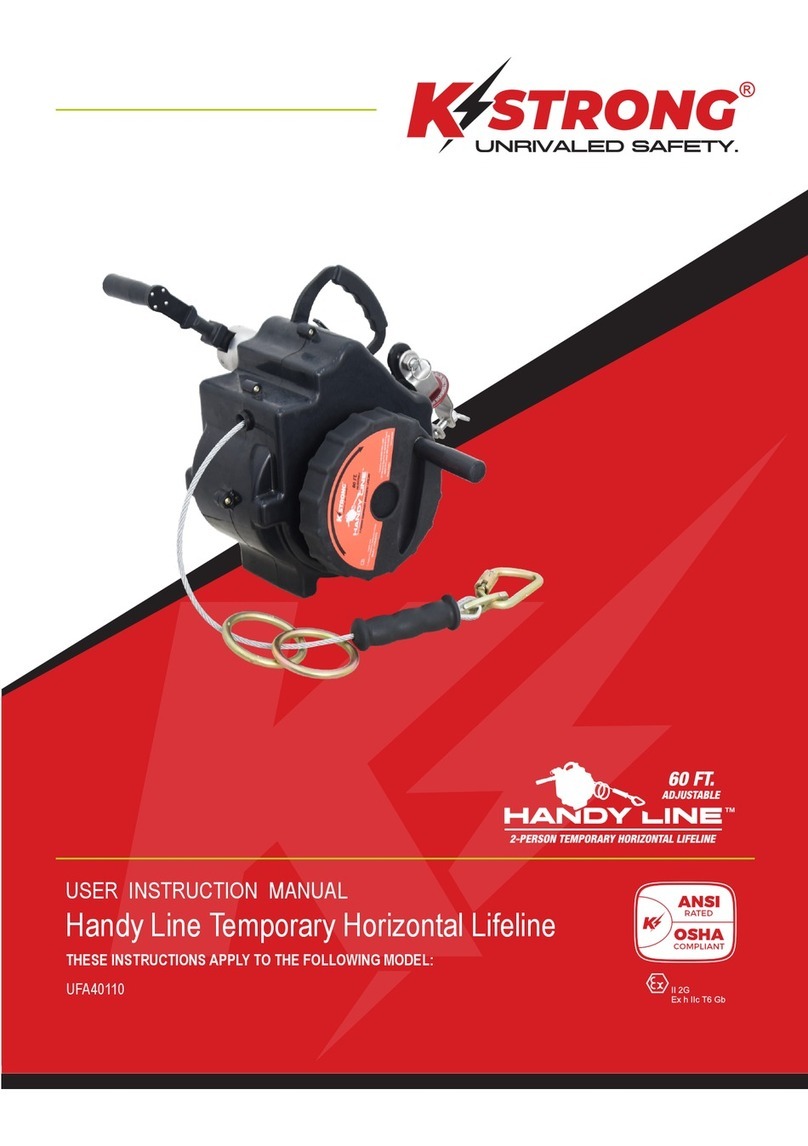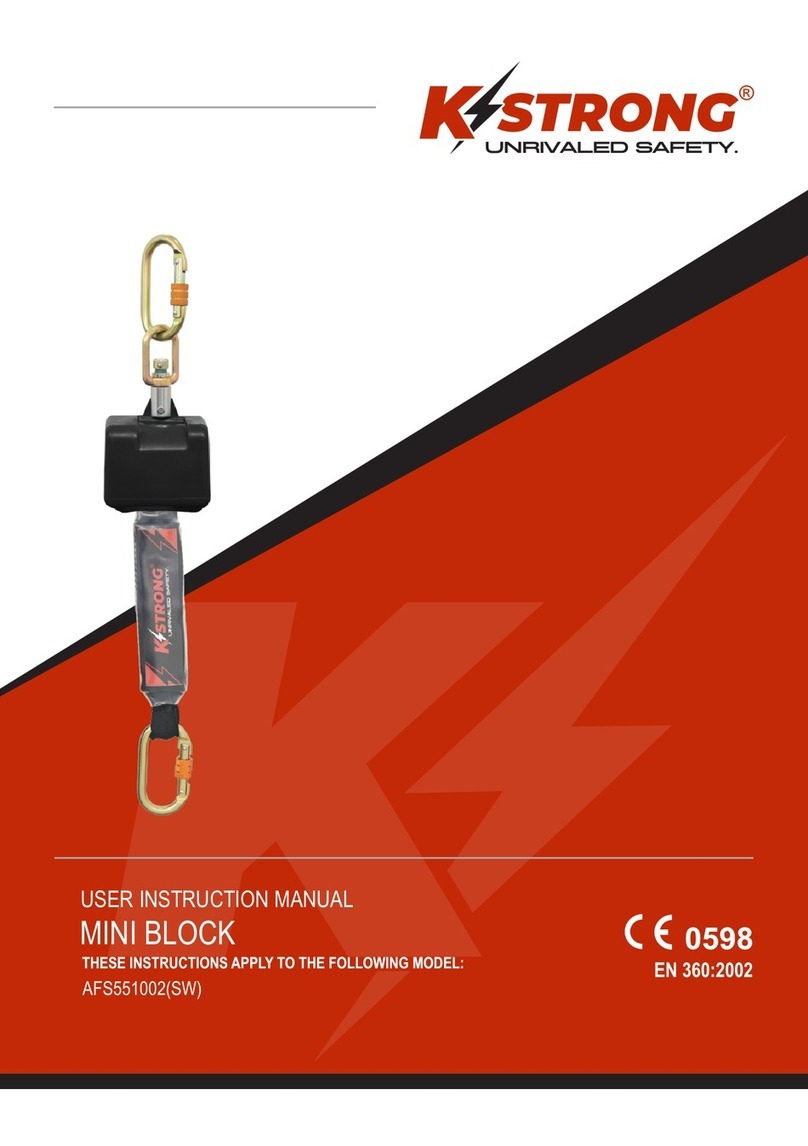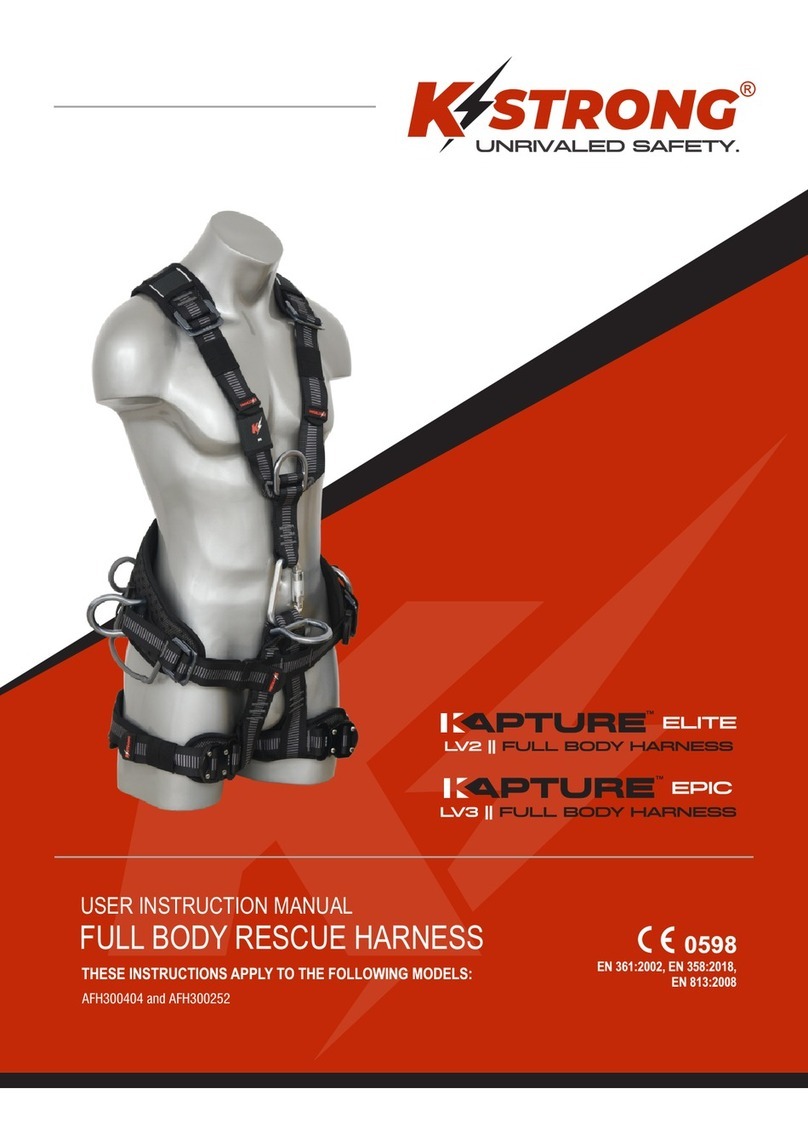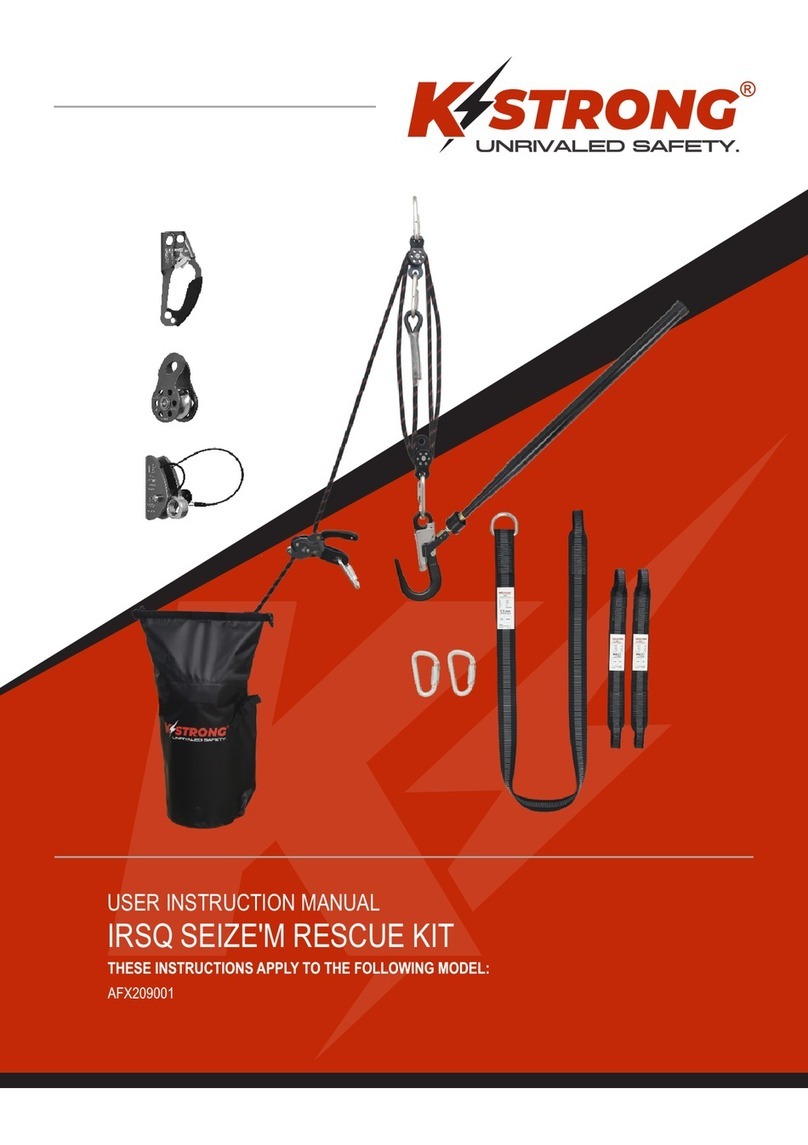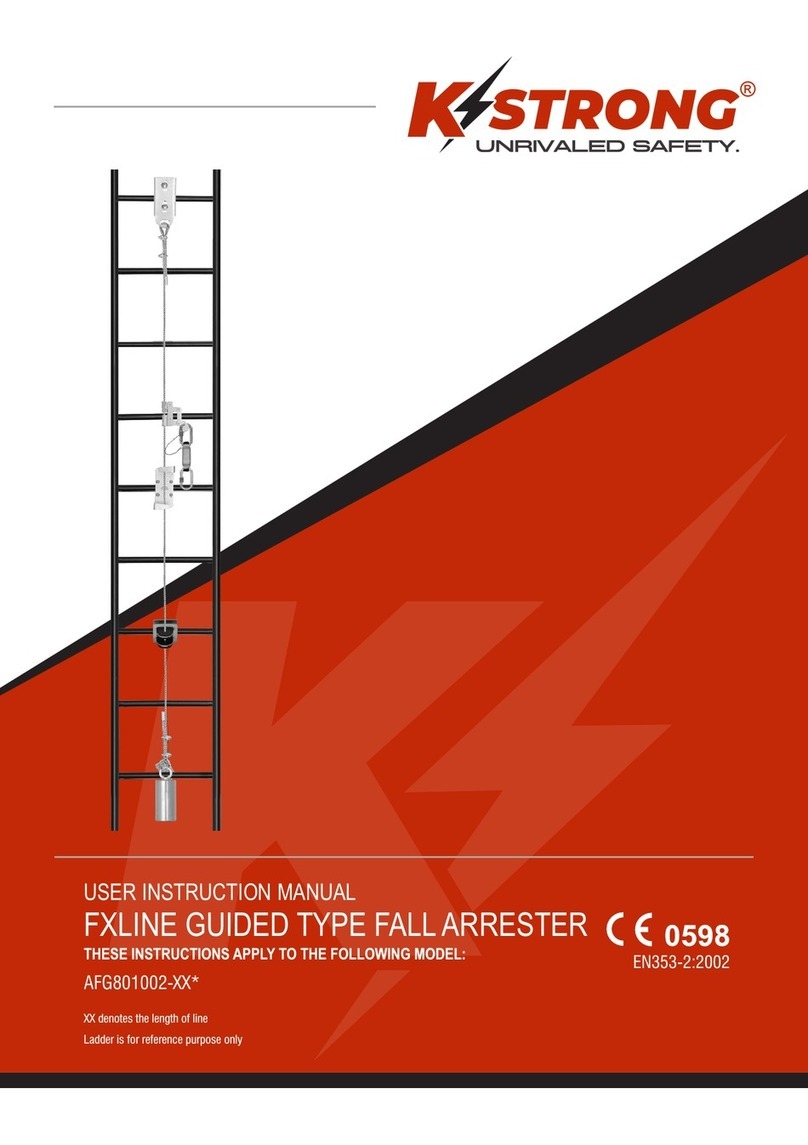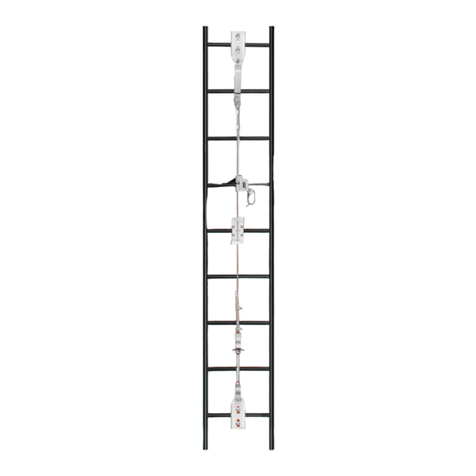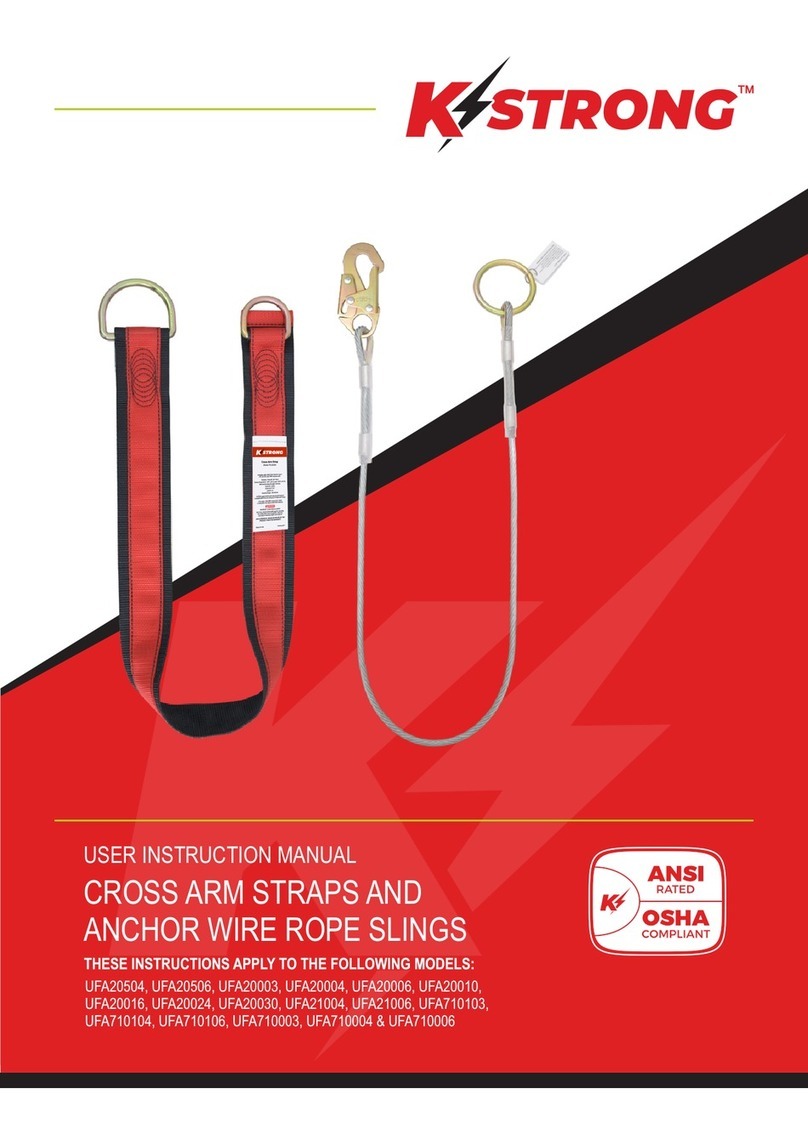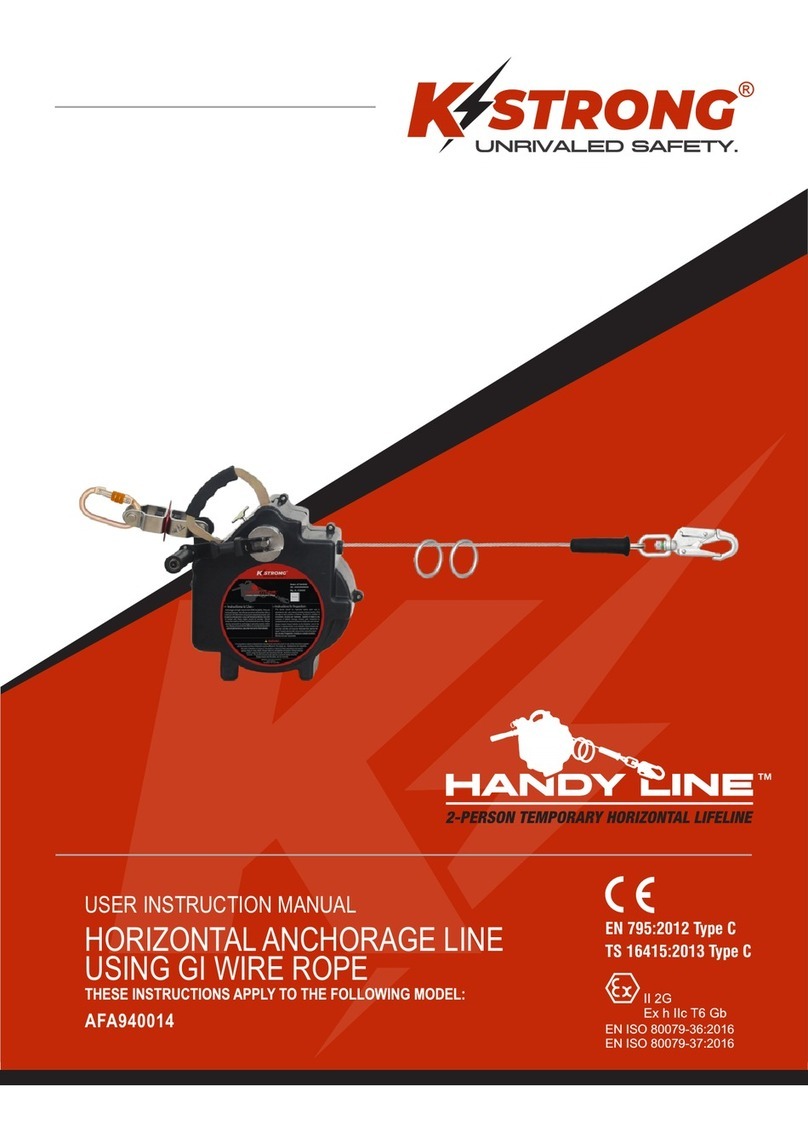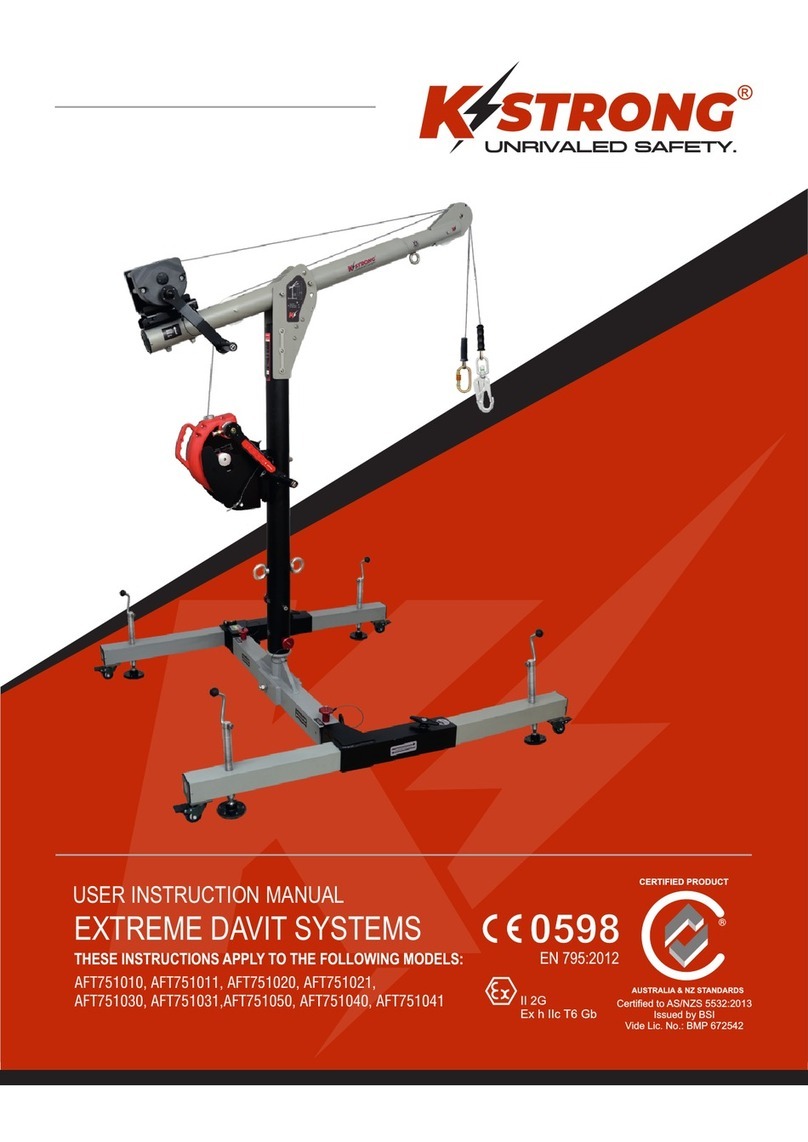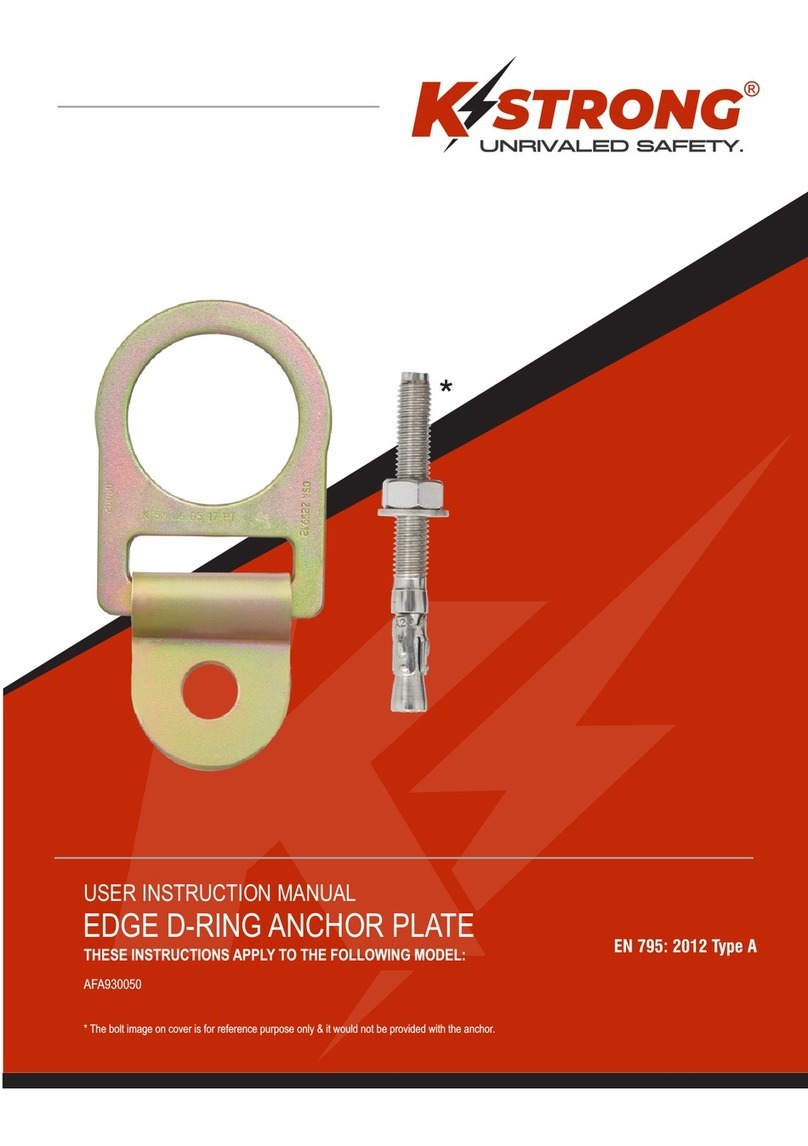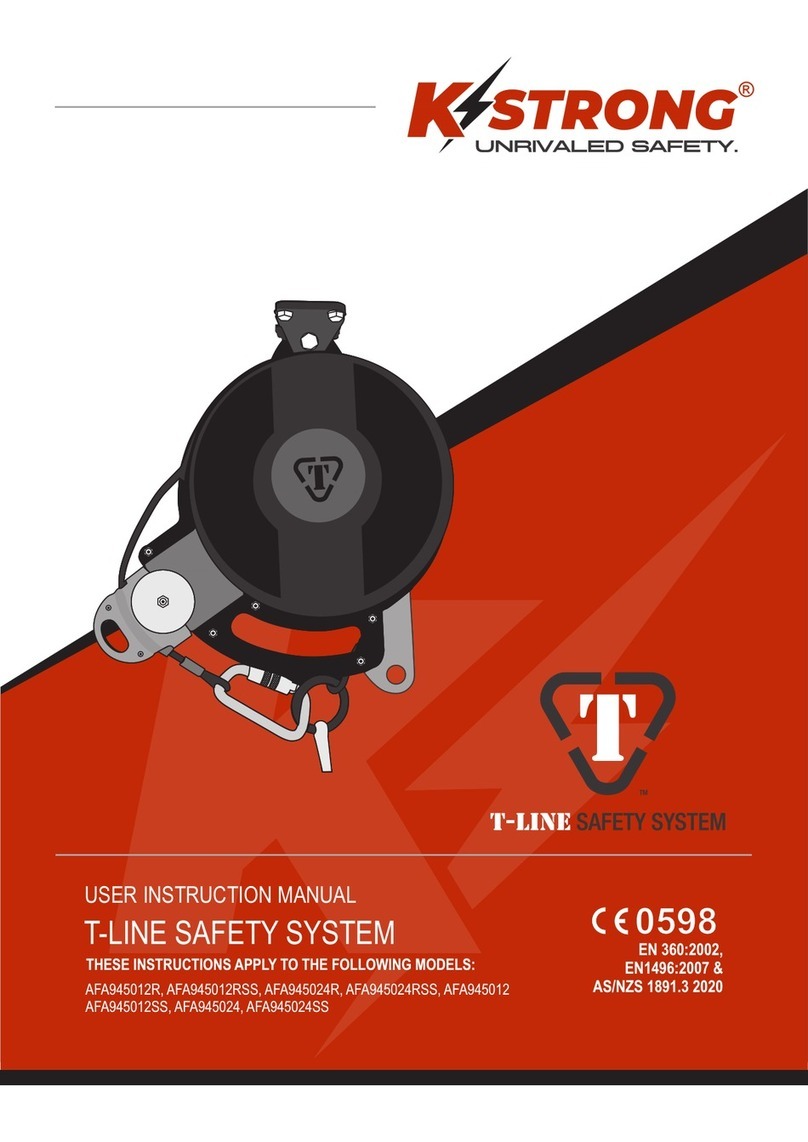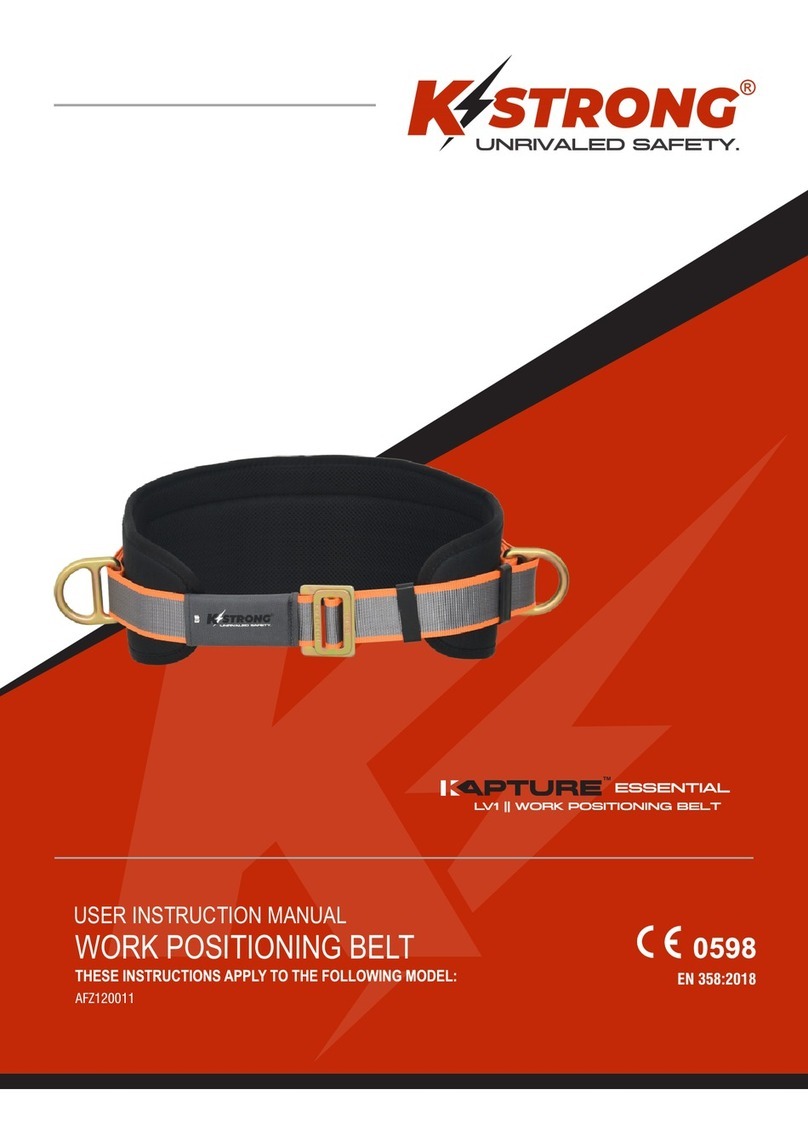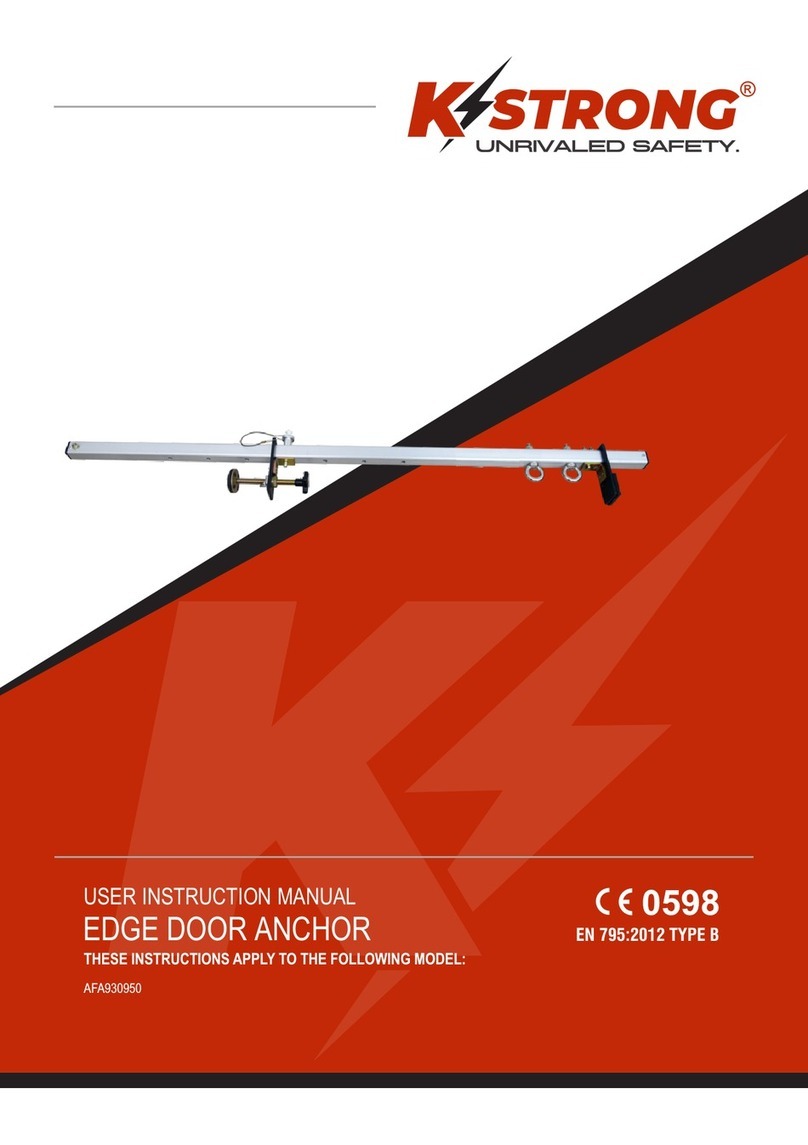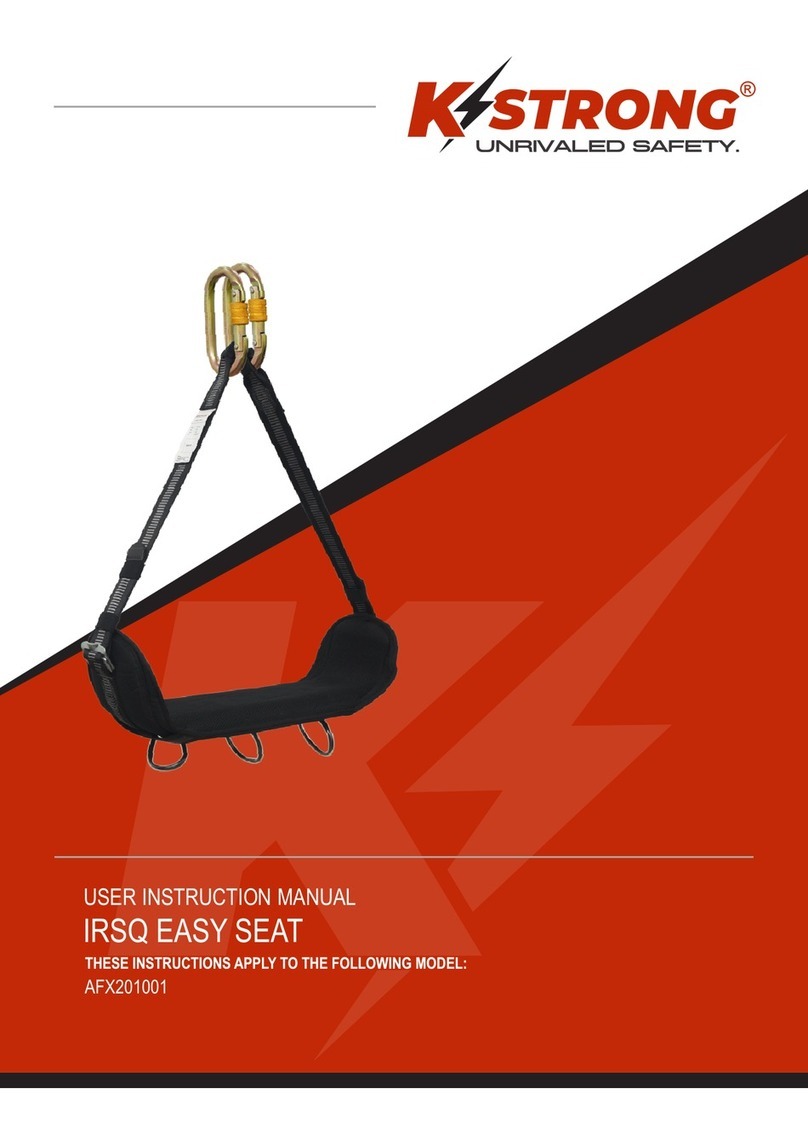
8
PURPOSE
KStrong energy absorbing lanyards are to be used as components in a personal fall arrest system. KStrong work positioning lanyards are to be
used as components of a work positioning system. Energy absorbing lanyards are specially designed to limit the fall impact forces on the body
of the user to less than the required levels.
KStrong energy absorbing lanyards made of aramid webbing should be used when working with tools, material and environments of high
temperature such as foundries, welding, re services, steel fabrication, oil industry, etc.
APPLICATION
Personal Fall Arrest: KStrong energy absorbing lanyards are used as a component of personal fall arrest systems. A full body harness along with
a connecting energy absorbing lanyard typically constitutes a personal fall arrest system. The energy absorbing element limits the maximum
arresting force to less than 1800 lbs. (8 kN). The D-ring or the attachment element on the back of a full body harness should be connected to
the energy absorbing lanyard for a complete fall arrest system. KStrong energy absorbing lanyards are to be used as part of personal fall arrest
systems for applications like inspection work, conned space rescue, construction and demolition, maintenance jobs, etc., where the possibility
of a fall exists.
LIMITATION OF USE OF KStrong ENERGY ABSORBING LANYARDS
These lanyards are designed in such a way that they work in sync with other elements of a personal fall arrest system. While they are designed
to arrest a fall from height, they also minimize the impact load on the wearer. KStrong recommends that only those components or sub systems
of the PFAS manufactured by KStrong are used in combination. If other manufacturer’s equipment is used, then this should be ensured for
compatibility by a qualied person only. If substitutions or replacements are made with non-approved components of sub-systems, then this may
severely affect the compatibility of the equipment, making the complete system unsafe for use.
LANYARDS FOR FOLLOWING TEMPERATURE ENVIRONMENTS
There is a limitation to the use of lanyards with Aramid webbing which are designed for use in high temperature environments. It is important to
note the following limitation:
• At exposure from 800°F to 900°F, Aramid webbing begins to char.
• Aramid webbing can withstand limited contact exposure to temperatures up to 1000°F.
• Polyester webbing starts to lose its strength between 300°F to 400°F.
INSPECTION OF ENERGY ABSORBING FALL ARREST LANYARDS
It is mandatory to have a detailed visual inspection of all the harnesses, lanyards, connectors, etc. prior to each use. This ensures that the
equipment is in good condition and is operating correctly. If there are any doubts regarding the safe state of the product or if the product has
been used to arrest a fall, then immediately remove the equipment from service. Contact KStrong for a qualied authorized repair center. Check
the back-shoulder straps of the harness for the fall indicator, which should be intact. If a fall indicator is found to be deployed, then the harness
should be removed from use immediately. Never attempt to repair or modify Personal Protective Equipment (PPE).
FORMAL INSPECTION
It is mandatory that a competent person, other than the user, perform a formal inspection of the PFAS and its components once at least every
six months. This frequency should be altered on the basis of conditions for use or exposure. The inspection results should be recorded in the
inspection and maintenance log at the end of this manual.
PRE-USE INSPECTION CHECK OF THE LANYARDS
The energy absorbing lanyards should be inspected prior to each use as per the following guidelines:
Step 1: Locate the impact indicator on the internal shock absorbing lanyards. The stitched impact indicator is located in a section of a textile
label that is folded back upon itself and held in its place with a specic stitch pattern. This stitch opens up releasing the warning sign
on the unfolded label, when the lanyard is subjected to a fall. If the impact indicator is found to have been released, then the lanyard
should be immediately removed from service.
Step 2: Check the lanyard hardware for any damage, break, distortion, sharp edges, burrs, cracks, worn parts or corrosion. Ensure that the
connecting hooks are functioning properly. The connector and hook gates must work smoothly, and lock fully upon closing.
Step 3: Check the webbing of the lanyard for any damaged, frayed or broken bers, or cuts. Check the entire length of the lanyard on both
sides for any discoloration, abrasion, molds, burns, knots, excessive soiling, heavy paint build up and rust staining. The lanyard
should be free of all of these. Look out for any brown, discolored or brittle damage due to ultraviolet radiation. The lanyard should not
show nay signs of fraying, unsplicing, unlaying, kinking, knotting, roping, excessive aging and excessive soiling, abrasion, alteration,
needed or excessive lubrication, excessive aging and excessive wear. Strength of the webbing will be signicantly reduced by any of
the aforementioned damages. Pulled, cut or broken stitches may be an indication that the lanyard has been subjected to a fall. In all
of the above cases, the lanyard must be removed from service immediately.

